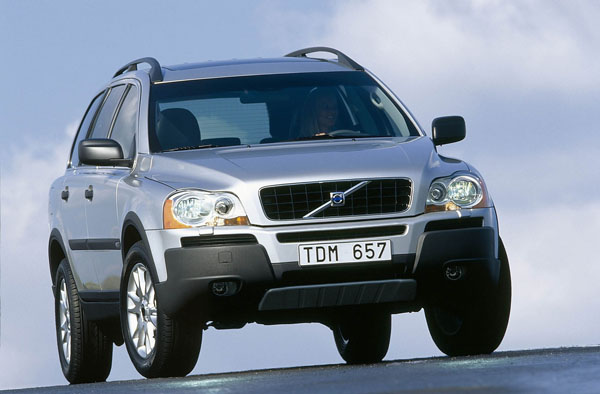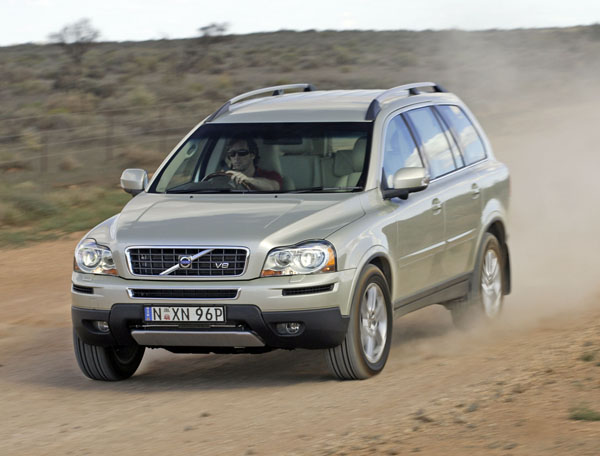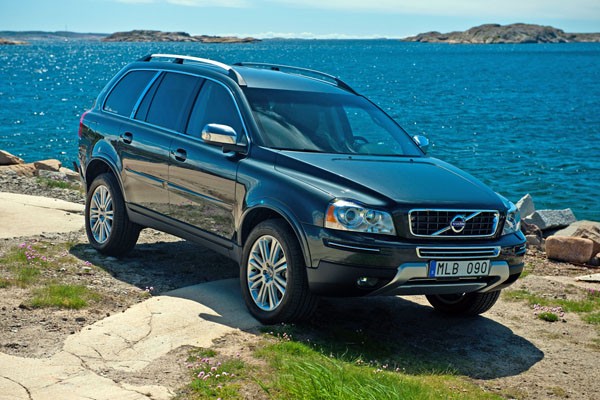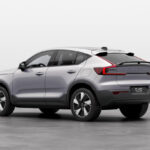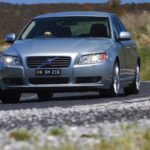Never a company to rush into things unnecessarily, Volvo has had its XC90 on sale since 2002 (2003 in Australia), albeit with many significant upgrades and changes along the way.
An all-new model is finally on the way and incorporates some fascinating new technology, obviously safety heads the list, but there are many other high-tech items on their way. The new XC90 is likely to lead to a rush of existing ones being traded in, so there may be a glut in used-car yards – and some good deals on offer. No promises, though…
While 13 years may seem like a long time between drinks it shows how good the original design of the Volvo XC90 was. Always intended to be a people mover, not an SUV, the XC90 does have some off-road ability if conditions are easy. Exploring interesting bush trails, even venturing onto the beach will keep adventurous families happy.
A practical feature of the body design is large areas of plastic protection strips, just the thing for reducing damage caused in shopping centre carparks. Or even when you squeeze through narrow bush trails if you’re one of the few who take a Volvo XC90 to explore the Aussie bush.
Interior space has been maximised by building a wagon with the cabin well forward, something greatly assisted by using a transversely mounted engine instead of the longitudinal units used by most large SUVs.
The only disadvantage of the cab-forward layout is that the front wheelarch intrudes into the front passenger’s footwell, making it rather narrow.
Volvo XC90 has no fewer than 64 seating/luggage combinations. Particularly clever is the centre seat in the second row; it can be moved forward until it almost touches the two front seats. This brings young children within easy reach of the two front occupants. In a very Volvo manner this seat even has a built-in child seat that can be set up in a few seconds.
The rear-seat squabs slide under the rear luggage area to minimise the space they take up when the seats are folded down.
All the remaining seats (except for the driver’s) can be folded flat for a van-like interior. Long items like ladders and big surfboards can be carted with ease in the security of the cabin.
Power is normally taken only to the front wheels, with the rear wheels coming into play if the fronts begin to lose traction.
On sealed roads the ride is good and the steering and suspension work well. The XC90 isn’t the most nimble of vehicles, but it hangs on safely. Electronic traction controls were there from the start of XC90 production; including a program that helps resist vehicle rollover. The later the XC90 model the more safety features are incorporated.
Power was originally provided by a choice between two petrol engines – one a five-cylinder 2.5-litre turbocharged unit, the other a twin-turbo straight-six of 3.0 litres.
In October 2006, Volvo introduced a fascinating 4.4-litre petrol V8 engine and a turbo-diesel with a capacity of 2.4 litres.
In April 2007 the straight-six 3.0-litre engine was expanded to 3.2 litres. The larger engine has less power than the smaller, but the wider spread of torque means it’s a practical unit. The five-cylinder unit was discontinued at the end of that year.
Transmissions are all automatic, with four-speed and five-speed units in earlier models and six ratios from 2007 onwards.
Volvo is long established in Australia with a dealer network that covers all metropolitan areas as well as quite a few country centres.
Service, repair and parts costs for the XC90 are about average for a vehicle in this class and we have heard of no real complaints about the availability of spares.
Check on insurance costs with several companies as there seems to be a bigger than average spread in premium charges.
WHAT TO LOOK FOR
Engine oil and filter changing is important on any turbocharged engine, check the service books. Ideally the work should have been done by an authorised Volvo dealer, but there are some high quality specialists who understand the vehicle well.
Automatic transmissions should be smooth and all but imperceptible on their changes at low throttle openings. Some shift feel at big openings is acceptable, but too much may indicate auto problems.
Listen for suspension noises, especially on rougher roads, there’s no need to find a dirt road for this, many suburban roads in poor condition will show up any problems.
Look over the body for signs of damage or crash repairs.
Check the interior, including the luggage area, for signs of hard use and damage.
Very few XC90s are ever taken off-road but if you do come across one with scratches on the lower bumper corners and the door sills it has probably been dabbling in the great Aussie bush.
CAR BUYING TIP
Off-Road vehicles that go off-road are rare beasts and are probably best avoided on the used-car scene unless the price is right.




